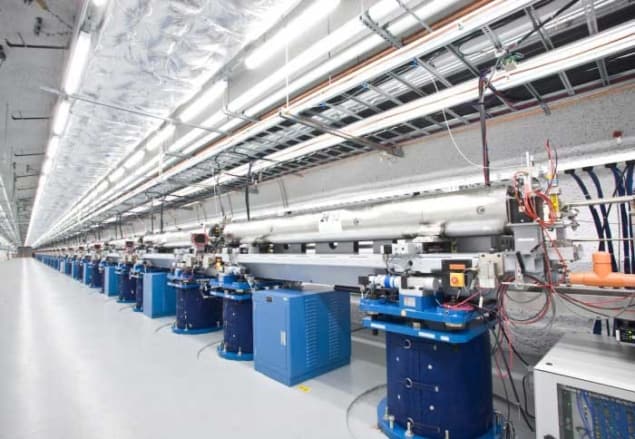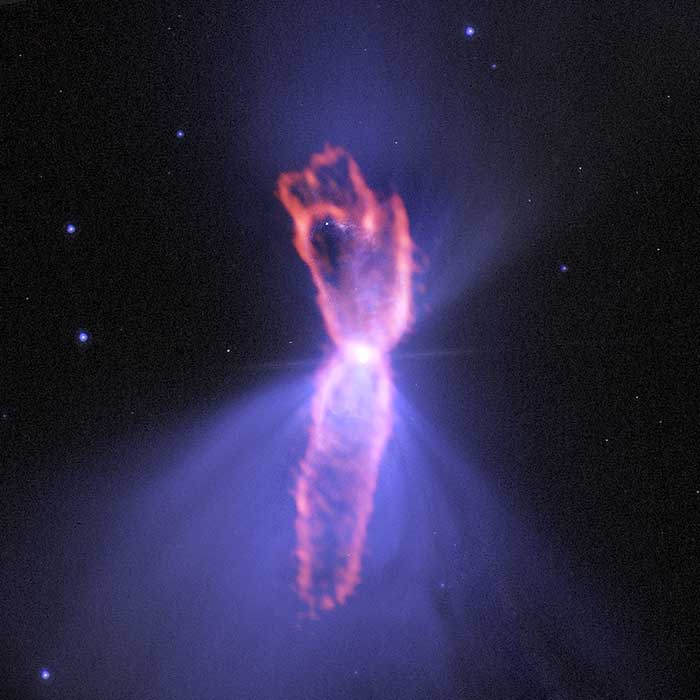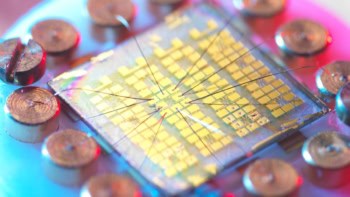Flash Physics is our daily pick of the latest need-to-know developments from the global physics community selected by Physics World‘s team of editors and reporters

Cryptic quantum communications for moving aircraft
The potential of using satellites for secure quantum communication has been demonstrated in a proof-of-concept study by researchers in Canada. Thomas Jennewein from the University of Waterloo and colleagues successfully sent quantum key distribution (QKD) transmissions from the ground to a moving aircraft for the first time. QKD uses the laws of quantum mechanics to guarantee complete security when two people exchange a cryptographic key using photons. If the key is read by a third party, this act of measurement will fundamentally change the nature of the key – thereby alerting the two correspondents to the presence of the eavesdropper. On the ground, QKD transmissions can be sent via optical fibres but their range is limited to a few hundred kilometres because of absorption losses. While free space links have been shown to work over ground in both stationary and moving tests, they are also limited to a few hundred kilometres – instead being held back by atmospheric absorption and turbulence, and the need for a clear line of sight. However, these drawbacks could be avoided by using satellites outside the Earth’s atmosphere. Jennewein and team therefore developed a system suitable for a satellite. Restricted to testing the system on Earth, the researchers set up a transmitter on the ground and used a Twin Otter aircraft to fly the receiver over it at angular rates similar to those of low-orbit satellites. They successfully achieved a quantum link for seven of their 14 passes and were able to extract the secret key for six of them. “This is an extremely important step, which took almost eight years of preparation,” explains Jennewein. “We have proved the concept, and our results provide a blueprint for future satellite missions to build upon.” The study can be found in Quantum Science and Technology.
Artificial intelligence boosts X-ray probe
Machine learning has been used to improve how X-ray pulses are used to study molecular dynamics. The new technique was developed by an international team of researchers and tested using data from the Linac Coherent Light Source (LCLS-1) free electron laser (FEL) at SLAC in the US. Trains of X-ray pulses lasting just 10–15 fs are produced at LCLS-1 and can be used to study chemical reactions and changes in molecular structure on very short timescales. However, the processes involved in producing the pulses are inherently unstable, and the intensity and timing of the pulses can vary by as much as 100%. This means that large amounts of measurement data from molecular studies are difficult to interpret and have to be discarded. One way around this problem is to determine the properties of the pulses as they are produced. But this can interfere with the experiment and will become increasingly difficult to do with the shorter pulses that will be produced by next-generation X-ray sources. Now, Alvaro Sanchez-Gonzalez and Jon Marangos of Imperial College London and colleagues have developed a new artificial intelligence-based technique that can accurately predict the properties of the X-ray pulses based on real-time measurements of certain properties of the FEL. Crucially, these measurements can be made fast enough to match the rate at which the X-ray pulses are delivered. “For current instruments, which generate about a hundred pulses per second, sometimes up to a half of the data is unusable,” explains Sanchez-Gonzalez. “This problem will only be compounded in next-generation instruments, such as the European XFEL or LCLS-II, designed to generate hundreds of thousands of pulses per second.” He adds, “Our method effectively resolves the problem, and should work on the new instruments as well as the older ones we tested it on. This will allow useful data to be gathered up to a thousand times faster.” The technique is described in Nature Communications.
Coldest object in the universe born in stellar collision

Astronomers working on the Atacama Large Millimeter/submillimeter Array (ALMA) in Chile have come up with an explanation of how the Boomerang Nebula – described as the coldest object in the universe – formed. Recent observations with ALMA allowed the team to make precise calculations of the nebula’s extent, age, mass, and kinetic energy. The results suggest that the spectacular outflow of gas and dust was created when a small companion star plunged into the heart of a red giant, ejecting most the matter of the larger star. “These new data show us that most of the stellar envelope from the massive red giant star has been blasted out into space at speeds far beyond the capabilities of a single, red giant star,” said Raghvendra Sahai of NASA’s Jet Propulsion Laboratory. “The only way to eject so much mass and at such extreme speeds is from the gravitational energy of two interacting stars, which would explain the puzzling properties of the ultracold outflow.” Wouter Vlemmings of Chalmers University of Technology in Sweden adds “The extreme properties of the Boomerang challenge the conventional ideas about such interactions and provide us with one of the best opportunities to test the physics of binary systems that contain a giant star.” Discovered in 1995, the nebula is an outflowing of gas and dust that is about 10 times faster than could be produced by a single star. The temperature of the outflow is less than half a degree kelvin. This is much colder than deep space, which is about 2.7 K. The study is reported in the Astrophysical Journal.



